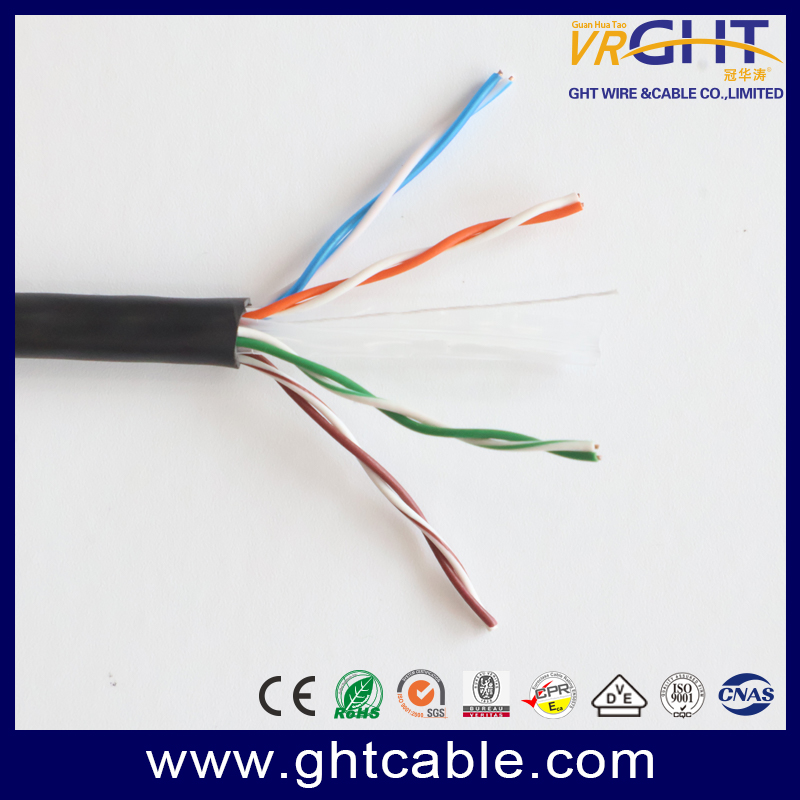
Top 10 Cable Types and Their Uses: From Internet to Power Supply
In our modern world, cables are the invisible lifelines that keep everything running. From powering our homes and offices to connecting us to the internet, different types of cables ensure that electricity and data flow without interruption. Choosing the right cable is critical—not just for performance, but also for safety and long-term reliability.
In this guide, we will cover the top 10 cable types and their uses, from internet connections to power supply, so you can understand which cable fits your needs best.
1. Coaxial Cable
A coaxial cable (or coax cable) is designed with a central conductor, insulating layer, shielding, and protective outer jacket. It is widely used for transmitting radio frequency (RF) signals.
Main uses:
- Cable television (TV) connections
- Broadband internet service from ISPs
- CCTV surveillance systems
- Satellite and antenna installations
Because of its strong shielding, coaxial cable resists interference and is reliable for long-distance installations.
2. Ethernet Cable (Network Cable)
Ethernet cables are the backbone of Local Area Networks (LANs), connecting computers, routers, switches, and servers. They are available in categories like Cat5e, Cat6, Cat6a, Cat7, and Cat8, each offering higher speeds and better shielding.
Main uses:
- Home and office internet connections
- Data centers and IT infrastructure
- Gaming consoles and smart TVs
- Video conferencing and streaming
For fast and stable data transmission, Ethernet cables remain the most widely used wired networking option.
3. Fiber Optical Cable
Unlike copper-based cables, fiber optic cables use strands of glass or plastic to transmit data as light signals. This allows them to carry information at ultra-high speeds over long distances.
Main uses:
- High-speed internet backbones
- Telecom and data centers
- Undersea communication systems
- Medical and industrial applications
Fiber cables are immune to electromagnetic interference and are essential for future-proof networks.
4. Power Cable
Power cables are designed to carry electricity from a power source to devices, appliances, and industrial equipment. They come in different insulation types, such as PVC and rubber, depending on the environment.
Main uses:
- Residential and commercial electrical wiring
- Industrial machinery and heavy-duty equipment
- Underground and overhead power distribution
High-quality power cables ensure safety, durability, and consistent voltage delivery.
5. Power Cord
A power cord is a removable cable used to connect appliances and electronics to an electrical outlet. Different countries use different plug standards, such as Type A, C, G, I, and more.
Main uses:
- Computers, monitors, and printers
- Household appliances like refrigerators and washing machines
- Portable electronics and chargers
Power cords may seem simple, but choosing the correct type and certification is crucial for safety compliance.
6. HDMI Cable
An HDMI (High-Definition Multimedia Interface) cable transmits both audio and video signals in high definition. It has become the standard for entertainment systems and digital devices.
Main uses:
- Connecting TVs, projectors, and monitors
- Gaming consoles and Blu-ray players
- Home theater systems
- Professional video presentations
HDMI supports 4K and even 8K video quality, making it essential for modern multimedia setups.
7. USB Cable
USB (Universal Serial Bus) cables are used to connect and power a wide range of devices. With evolving standards like USB-C, data transfer speeds have become extremely fast.
Main uses:
- Smartphones, tablets, and laptops
- External hard drives and storage devices
- Printers, scanners, and cameras
- Charging and power delivery
USB-C in particular has become the global standard for fast charging and high-speed data transfer.
8. Audio Cable
Audio cables are designed to carry analog or digital sound signals. Common types include 3.5 mm AUX cables, RCA cables, and optical audio cables.
Main uses:
- Headphones and speakers
- Professional sound systems and mixers
- Car audio connections
- Home theater setups
High-quality audio cables ensure clear, distortion-free sound.
9. Telephone Cable
Although less common today, telephone cables are still in use for traditional landline services and DSL internet connections. They usually consist of twisted pairs of copper wires.
Main uses:
- Landline phone connections
- DSL broadband internet
- Intercom systems
Even though mobile networks dominate, telephone cables are still vital in certain infrastructures.
10. Charging Cable
Charging cables, often overlapping with USB standards, are essential for powering mobile devices. Specialized versions include Lightning cables for Apple devices and MagSafe connectors.
Main uses:
- Smartphones and tablets
- Laptops and power banks
- Wearable devices and accessories
Fast-charging cables have become a necessity for today's on-the-go lifestyle.
Why Choosing the Right Cable Matters
Using the wrong cable can lead to reduced performance, safety risks, or even damage to equipment. For example, using a low-quality Ethernet cable may limit your internet speed, while a poorly insulated power cable can cause overheating or fire hazards.
That's why it is important to choose cables that match your exact requirements and from suppliers who guarantee quality and safety.
VRGHT – Your Reliable Cable Supplier
At VRGHT, we provide a wide range of cables designed to meet the needs of both consumers and businesses. Our product line includes
- Network cables for fast internet and LAN setups
- Coaxial cables for TV, CCTV, and broadband internet
- Fiber optical cables for high-speed data transmission
- Power cables and cords for safe and reliable electricity supply
- Specialty cables, including HDMI, USB, and charging cables
We are committed to quality, durability, and international safety standards, ensuring that every cable you purchase delivers long-lasting performance. Whether you are an IT manager, contractor, or homeowner, VRGHT has the right cable solution for your project.
Conclusion
Cables may be out of sight, but they are essential to keeping our modern world connected and powered. From coaxial cables for television to fiber optical cables for lightning-fast data, and from power cords for household appliances to Ethernet cables for seamless internet, each type serves a unique role.
If you want reliable, high-performance, and safe cables for any application, VRGHT is the supplier you can count on. Our expertise and product variety ensure that you always have the right cable for the job.










Leave a comment